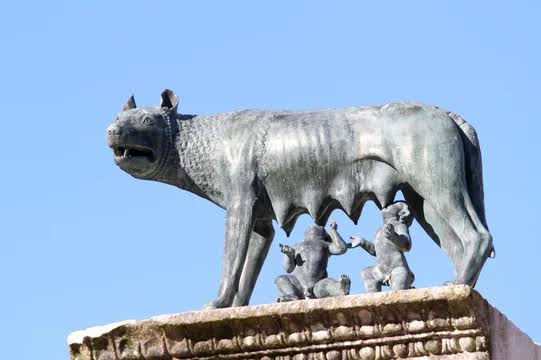Libyan Antiquities and Tourism authorities have recovered a large bronze colonial wolf statue that was stolen a decade ago from its position atop a pillar in central Benghazi.
Khaled al-Aqouri, Head of the Antiquities and Tourism department who announced the discovery of the revered statue, said it was found on a farm whose owner said he bought the sculpture as scrap.
“Authorities were alerted to the colonial-era statue after a tip off and discovered it in a farm near Benghazi belonging to Saied Mohammed Bourabida, who told them he had bought it from a metal yard because he liked the way it looked,” al-Aqouri said.
Bourabida reportedly told the police that he bought and kept the statue, a replica of the famous Capitoline Wolf sculpture that depicts a legendary scene of ancient Rome, in plain view under a spreading tree next to the terrace of his house, as he did not know it was stolen property.
“I remembered this statue in its position near the port from when I was young … I had a smelting workshop and when I saw it by chance at the scrap dealer’s, I liked its shape and the quality of work, so I bought it,” he said.
His position was corroborated by al-Aqouri who said he was confident that Bourabida had not known that the sculpture was still public property.
The Wolf statue was erected in the new Benghazi city centre by Italian colonial authorities in the 1930s when it ruled the North African country as part of its push to promote a connection between ancient Roman settlement of Libya and their modern colonial rule over the country.
In the colonial era, Libya was an important Roman province and was home to the great port cities of Sabratha and Leptis Magna whose imposing stone temples and theatres still stand on the Mediterranean shore.
However, after gaining independence, Libyan authorities removed the wolf from its pillar and it disappeared following Muammar Gaddafi’s seizure of power in 1969, a revolutionary period when relics of foreign colonial rule were banished from sight.
At some point, the statue lost its front legs as well as the figures of two human infants suckling underneath, representing Romulus and Remus the mythical founders of Rome who were said to have been raised by a wolf.

 VenturesNow2 days ago
VenturesNow2 days ago
 Musings From Abroad2 days ago
Musings From Abroad2 days ago
 Metro2 days ago
Metro2 days ago
 Metro21 hours ago
Metro21 hours ago




























